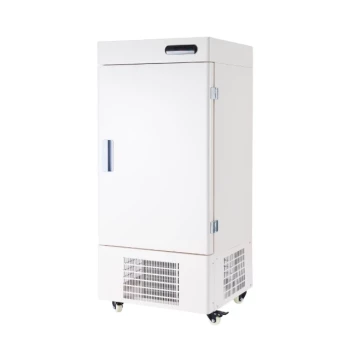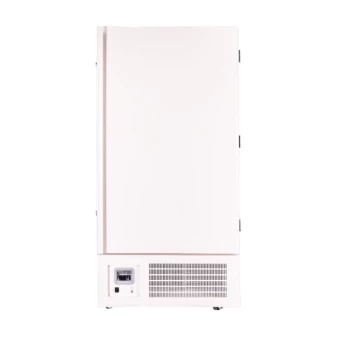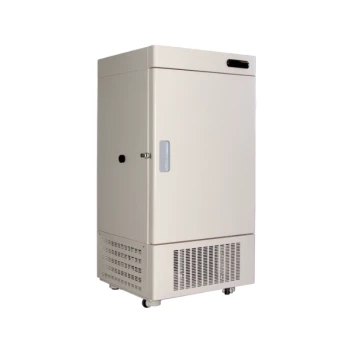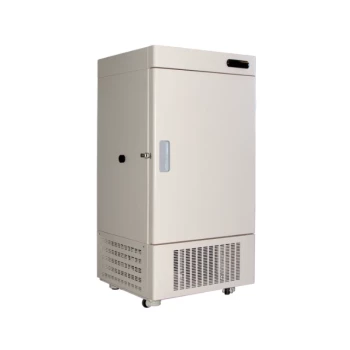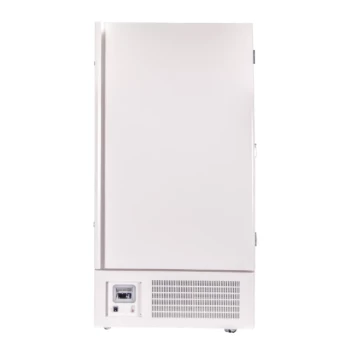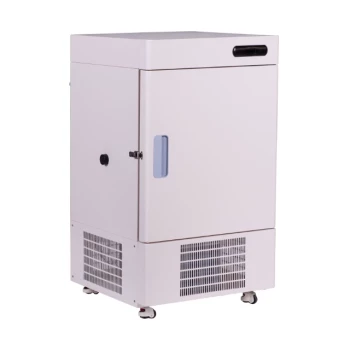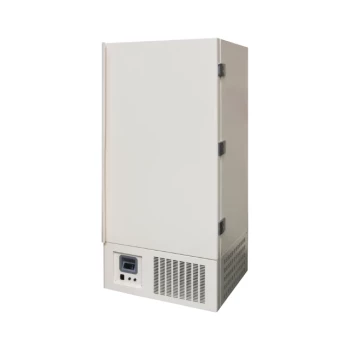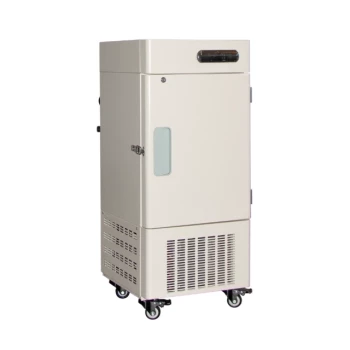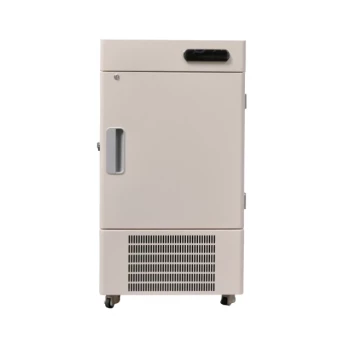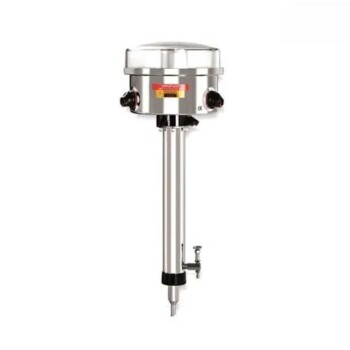At its core, an Ultra-Low Temperature (ULT) freezer enhances specimen security through a dual-layer approach. It combines modern physical access controls like keycards and biometric scanners with the fundamental security of ensuring long-term biological integrity through stable, precisely controlled environmental conditions.
True specimen security is not just about preventing theft; it's about guaranteeing the sample's scientific viability. A ULT freezer achieves this by protecting against unauthorized access, temperature degradation, and operational failure.
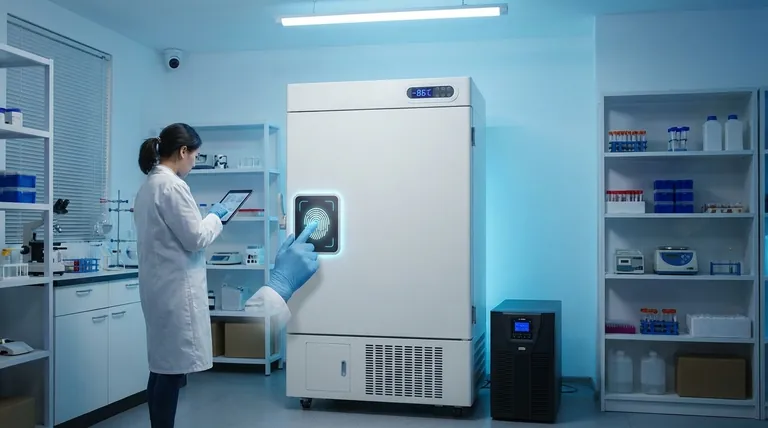
Beyond Locks: The Two Layers of Specimen Security
Thinking of security solely in terms of a lock and key is a critical oversight. For valuable biological specimens, security is a comprehensive strategy that protects both the physical sample and its intrinsic value. ULT freezers are designed to address both of these dimensions.
Layer 1: Physical Access Control
The most obvious security layer involves controlling who can physically access the freezer's contents. This is crucial for maintaining chain of custody, preventing tampering, and complying with regulatory standards.
Modern ULT freezers often incorporate sophisticated systems such as keycard access or fingerprint scanners. These features ensure that only authorized personnel can open the unit, creating an auditable log of every entry.
Furthermore, these systems are typically paired with integrated alarm systems. An alarm will trigger upon an unauthorized entry attempt, providing an immediate alert to potential security breaches.
Layer 2: Preserving Biological Integrity
The more fundamental layer of security is the preservation of the sample itself. A physically secure but non-viable sample is worthless. A ULT freezer's primary function is to provide security against degradation over time.
This is achieved through unwavering temperature stability. By maintaining a constant, ultra-low temperature, these freezers halt biological activity, preserving the integrity and viability of cells, tissues, and other materials for months or even years.
Advanced features like fast cooling technology enhance this security. They ensure the internal temperature recovers quickly after a door opening, minimizing the risk of thermal damage to sensitive specimens.
Common Pitfalls That Compromise Security
Even the most advanced ULT freezer cannot guarantee security if it's not part of a larger operational plan. Relying solely on the machine's features is a common and dangerous mistake.
Neglecting Backup Systems
The single greatest threat to specimen integrity is power failure. A freezer's security features are irrelevant if the unit is off. A robust backup power source, such as a generator or a battery backup system (UPS), is a non-negotiable component of any secure storage plan.
Ignoring Operational Protocols
Human error remains a significant risk. Failing to follow proper procedures can compromise samples instantly. This includes using appropriate personal protective equipment (like insulated gloves) to prevent injury and following strict protocols for inventory management and safe defrosting.
Over-reliance on a Single Feature
A keycard reader does not protect against equipment failure, and excellent temperature stability does not prevent a disgruntled employee from tampering with samples. True security comes from an integrated system of physical controls, environmental monitoring, backup systems, and rigorous operational protocols.
Making the Right Choice for Your Goal
To select the right ULT freezer, you must align its features with your most critical security objective.
- If your primary focus is regulatory compliance and preventing unauthorized access: Prioritize models with robust, built-in access logs, biometric scanners, and integrated alarm systems that can connect to facility monitoring.
- If your primary focus is the long-term viability of irreplaceable samples: Emphasize freezers with exceptional temperature uniformity, rapid temperature recovery rates after door openings, and dedicated ports for backup power systems.
- If your primary focus is operational safety and preventing human error: Look for units with intuitive user interfaces, clear alarm indicators, and designs that simplify routine maintenance and defrosting procedures.
Ultimately, a multi-layered security strategy is the only way to truly protect the invaluable assets stored within your freezer.
Summary Table:
| Security Layer | Key Features | Protects Against |
|---|---|---|
| Physical Access Control | Keycard/Biometric Scanners, Audit Logs, Integrated Alarms | Unauthorized Access, Tampering, Theft |
| Biological Integrity | Precise Temperature Stability, Fast Cooling Recovery | Degradation, Loss of Viability, Thermal Damage |
| Operational Security | Backup Power Support, Intuitive Alarms & Interfaces | Power Failure, Human Error, Equipment Failure |
Protect your most critical samples with confidence. KINTEK specializes in providing reliable Ultra-Low Temperature freezers and lab equipment designed to meet the stringent security and preservation needs of modern laboratories. Ensure your specimens' integrity and compliance—contact our experts today to find the perfect ULT freezer for your specific security goals!
Visual Guide
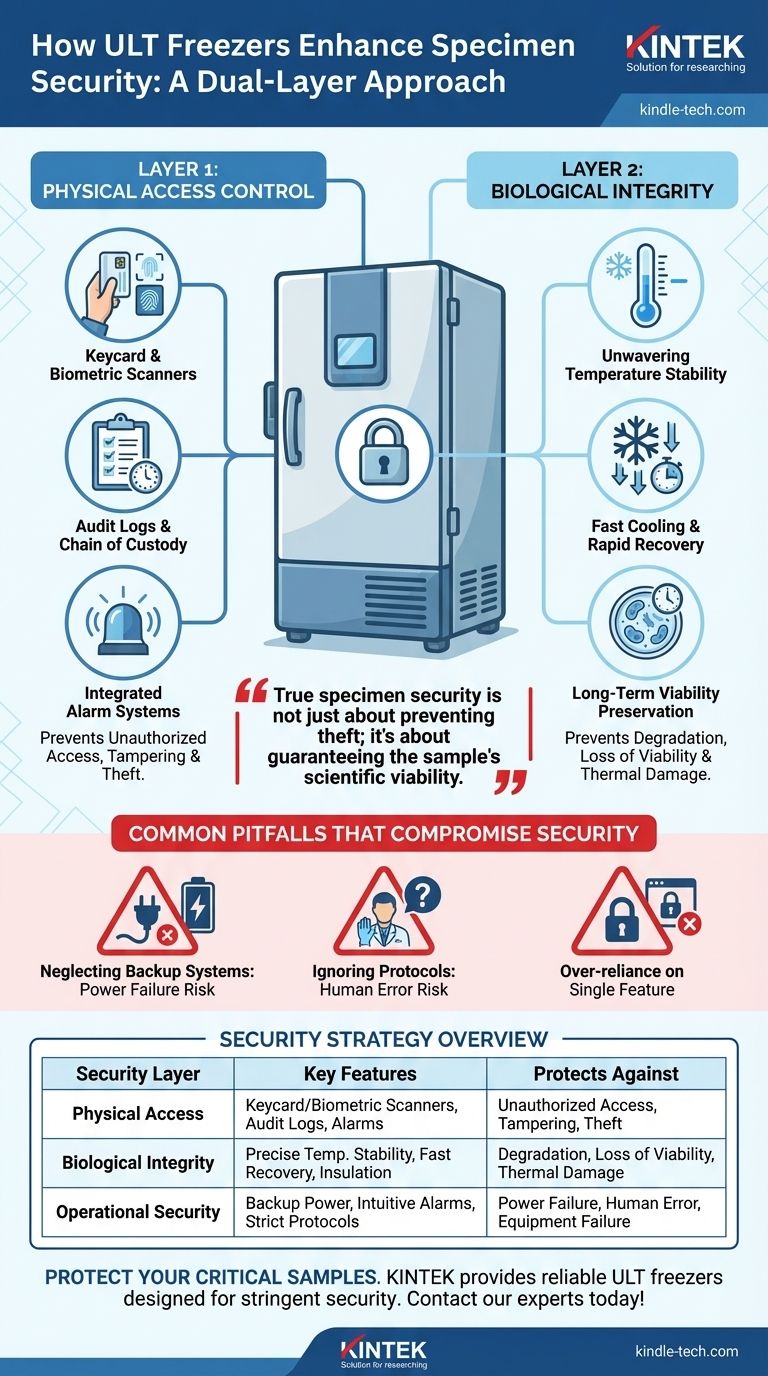
Related Products
- 158L Precision Vertical Ultra Low Freezer for Laboratory Applications
- 508L Advanced Vertical Ultra Low Temperature Freezer for Critical Laboratory Storage
- 208L Advanced Precision Laboratory Ultra Low Temperature Freezer for Cold Storage
- 308L Precision Ultra Low Temperature Freezer for Laboratory Applications
- 708L Ultra Low Temperature Freezer High Performance Laboratory Freezer
People Also Ask
- In what fields are ultra low temperature freezers most commonly used? Essential for Biomedical, Clinical, and Research Labs
- What features do ultra-low temperature freezers typically include? Ensuring Absolute Sample Security
- What are the common applications of ultra-low temperature freezers? Preserve Your Most Valuable Samples
- What are ultra-low temperature freezers designed for? Preserving Your Most Valuable Biological Samples
- What are ultra low temperature freezers used for? Preserving Critical Biological Samples for Decades
